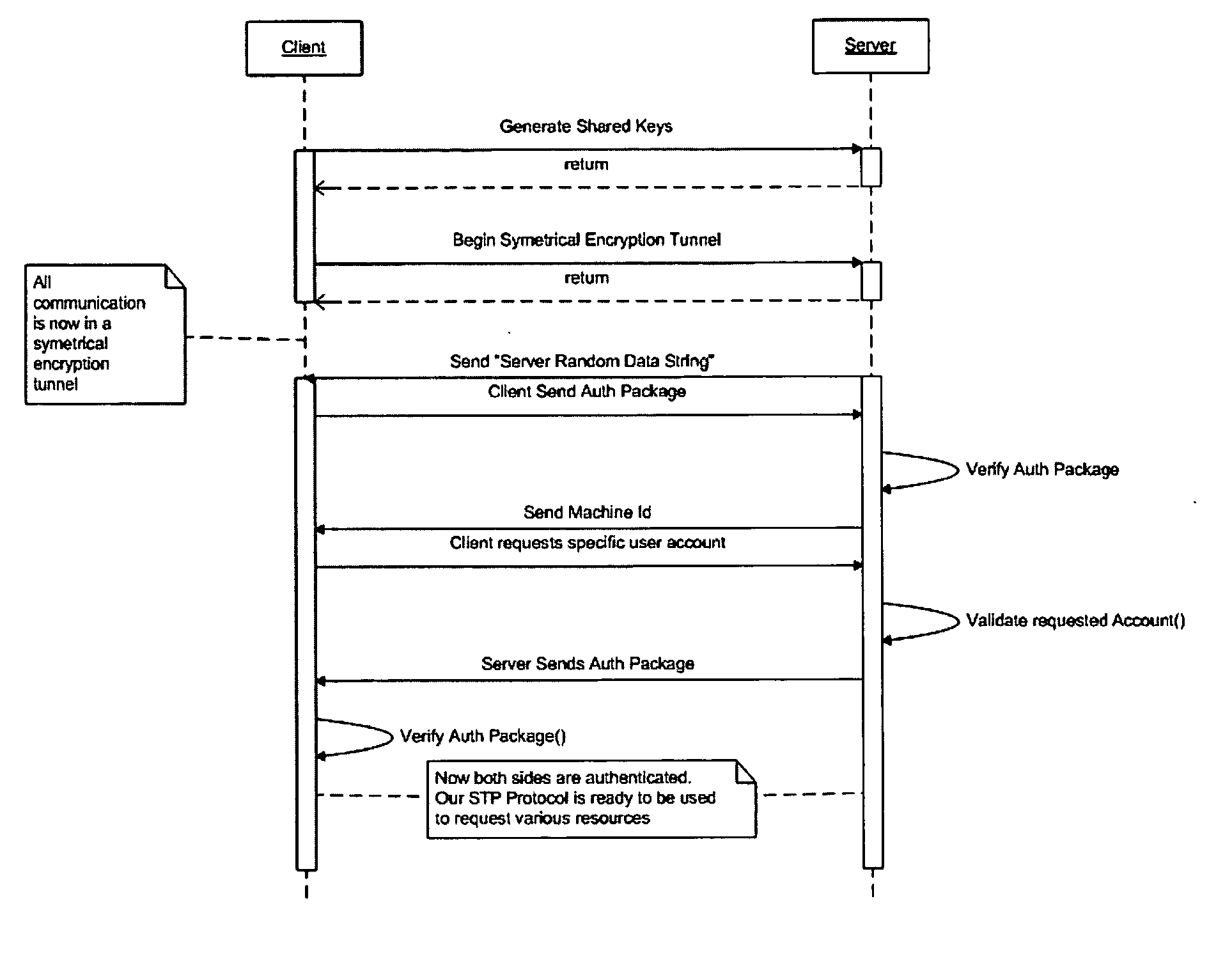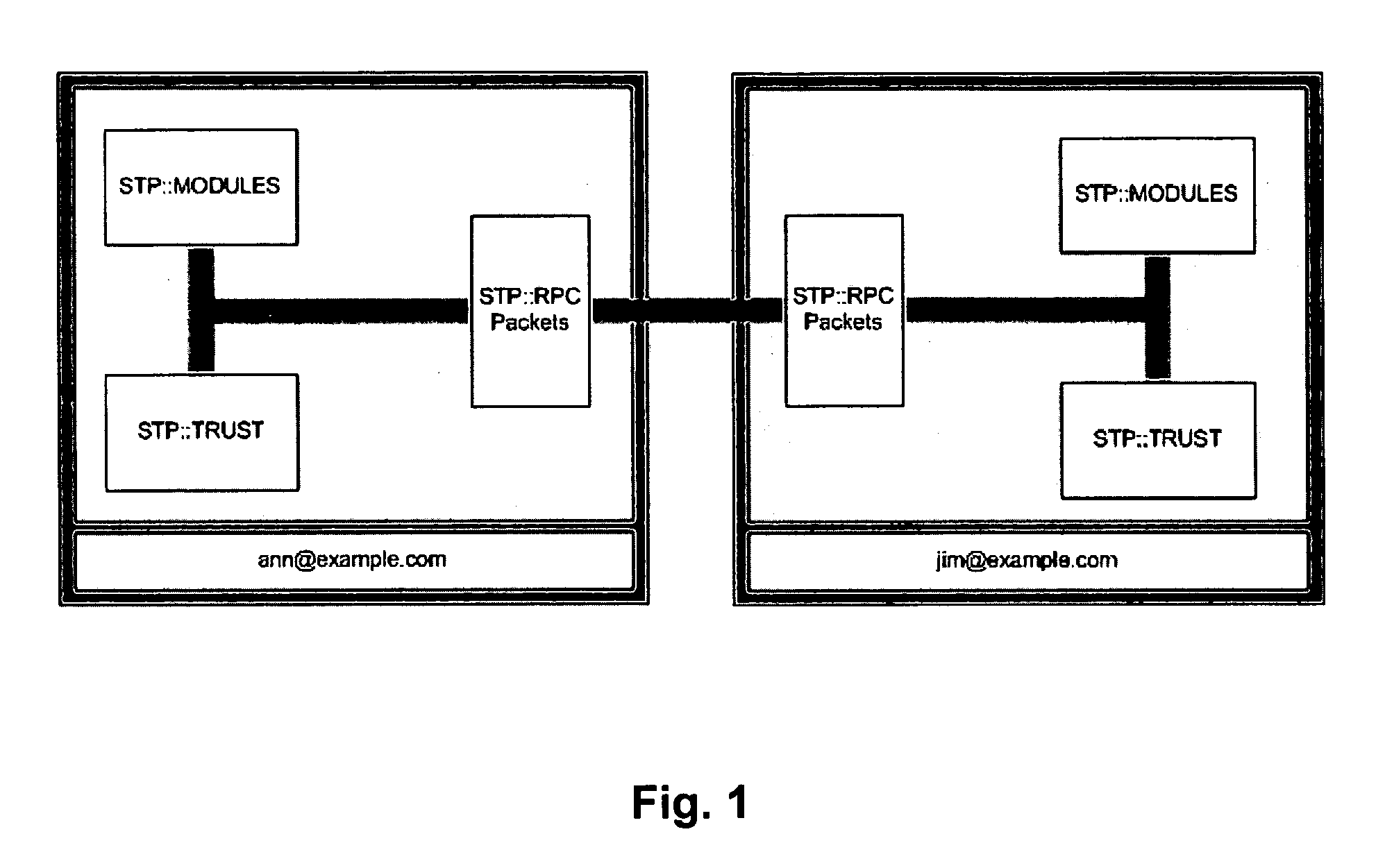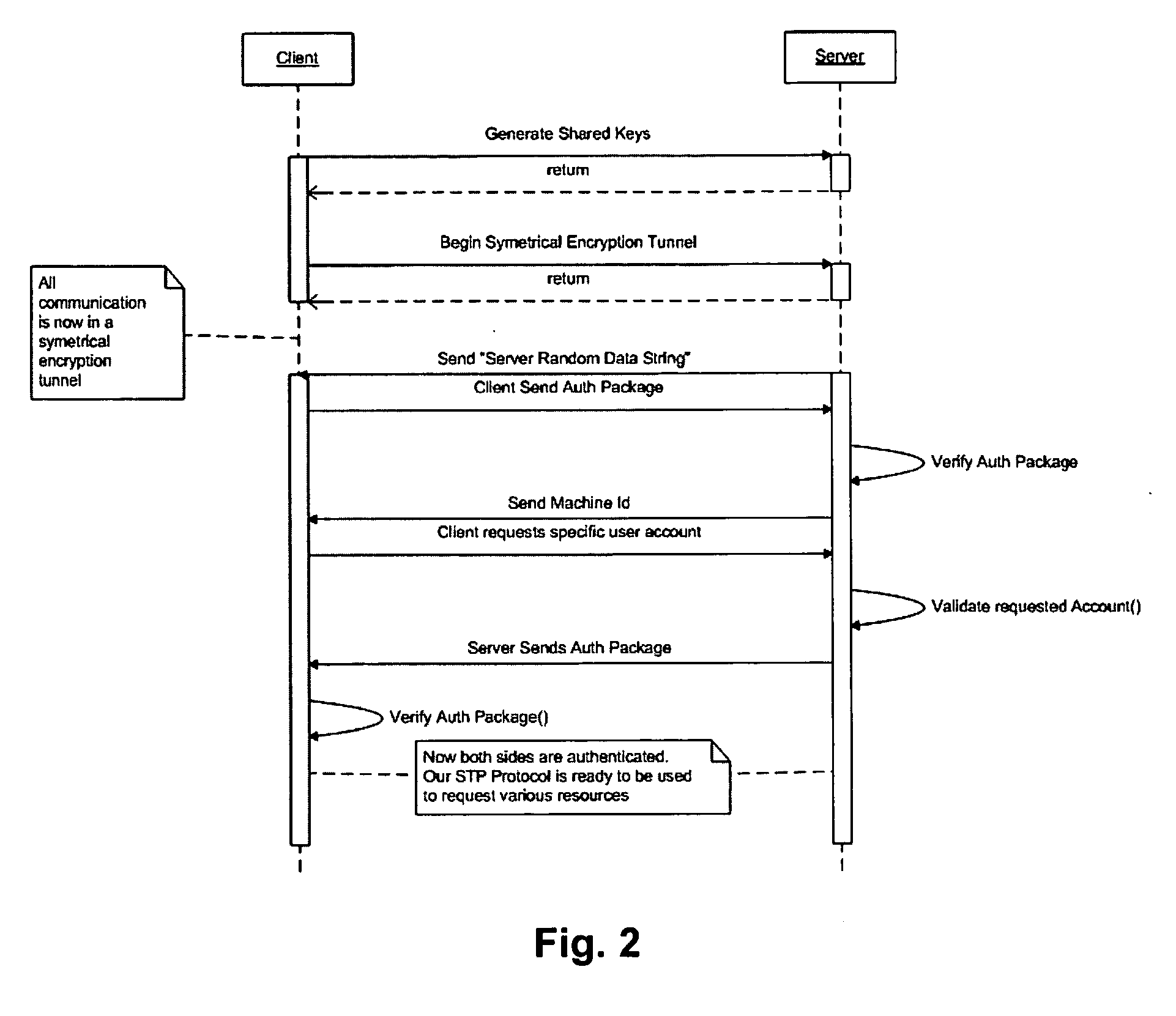Method of providing secure access to computer resources
a secure access and computer technology, applied in the direction of transmission, instruments, electric digital data processing, etc., can solve the problems of inability to trust users, inability to provide security services, and inability to ensure the security of user accounts, so as to and reduce the risk of identity th
- Summary
- Abstract
- Description
- Claims
- Application Information
AI Technical Summary
Benefits of technology
Problems solved by technology
Method used
Image
Examples
example
[0046] The following provides an example of an embodiment of the present invention using pseudo-code and is directed to a person skilled in the art. The pseudo-code in the left hand column represents modules and procedures that are executed on the second computer or computer network, whereas the pseudo-code in the right hand column represents modules and procedures that are executed on the first computer or computer network. Lines of pseudo-code are executed sequentially so that code appearing in both columns on the same line is executed in parallel.
Second computer or computer networkFirst computer or computer network / / Connect / / Wait for connectionMyId = GetMyIdentity( );MyCert = GetLocalCert( MyId );CertHash = GetMyIdentityHash( MyCert );YourId = “jim@example.com”;YourCert = GetCert(YourId);ConnectToId( MyCert, YourId );AcceptConnection( ); / / Generate Symetrical Key / / Generate Symetrical KeyInitiateKeyExchange( );sek = AddressKeyExchange( );Sek = CompleteKeyExchange( ); / / All communi...
PUM
 Login to View More
Login to View More Abstract
Description
Claims
Application Information
 Login to View More
Login to View More - R&D
- Intellectual Property
- Life Sciences
- Materials
- Tech Scout
- Unparalleled Data Quality
- Higher Quality Content
- 60% Fewer Hallucinations
Browse by: Latest US Patents, China's latest patents, Technical Efficacy Thesaurus, Application Domain, Technology Topic, Popular Technical Reports.
© 2025 PatSnap. All rights reserved.Legal|Privacy policy|Modern Slavery Act Transparency Statement|Sitemap|About US| Contact US: help@patsnap.com



